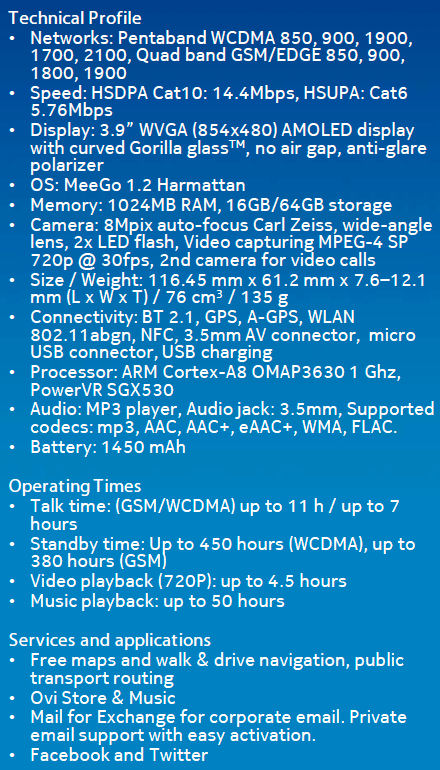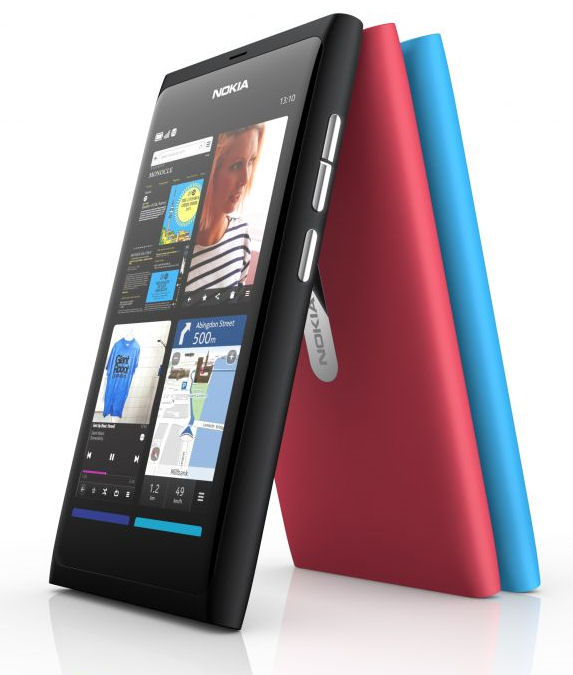I never believed Meego to be a dead platform from Nokia's point of view.
It is widely believed that there can only be three mainstream smartphone ecosystems, in addition to niche platforms such as RIM, and with Android and Apple IOS occupying two of those positions the race to be the third depends massively on the perception of momentum.
Nokia want to be (a part of) that third platform and they didn’t have confidence that MeeGo could take them there.
But even if adopting Win7 mobile for smartphones was a ‘necessary’ choice for Nokia, what does it mean for open platforms like Meego whose competitive advantage is enhanced by its cross-platform development environment?
On the surface it looks pretty bad:
1. MeeGo is no longer a smartphone platform, it has now become a smartphone ‘project’ which will limit itself a single 2011 release before morphing into R&D for future concepts. What this means is that stage 5 of 5 will probably not attract much commercial developer interest, nor see investment in services expected of a tier one device.
2. QT will not be offered as a development platform for Nokia Win7 phones, that will be in the hands of Microsoft, effectively killing Nokia’s ambition to see QT as the premier mobile development platform. What this means is that as far as Nokia is concerned QT has very little utility as a strategic asset and so investment will plummet.
3. Microsoft Marketplace will replace Ovi-Store as the store for applications on Nokia Win7 devices, and this is unlikely to be made available to MeeGo devices. This may not matter quite as much as it initially appears however as an entirely separate app-store ecosystem has grown up around Nokia/MeeGo in the form of Project Bretzn.
This is in no way a desirable outcome as far as this blog is concerned, for there is no dream of a mainstream open platform any longer, but perhaps it will survive as a niche platform?
Nokia currently spends nearly three times as much on R&D as its peers. So when we see that investment by Nokia will decline by a third, and investment in MeeGo will be squeezed to less than half of what it was, perhaps we need a little perspective.
MeeGo alone will probably see an annual investment of circa $200 million. If we likewise contrast that to the circa $800 million to be invested in “Windows Phone” then we can guess that “MeeGo” phones will attract as much as one fifth of the investment that Nokia will put into “Mobile Phones – Platforms” as well as “Services” which amounts to circa $350 million per year. That said, $350 million would be the upper ceiling given that MeeGo is now a ‘project’ rather than a platform, so lets halve that figure and call it $175 million a year in platforms and services.
So, in a like-for-like comparison with competitors, a total investment of around $400 million dollars a year doesn’t appear too desperate, provided one understands that it is being kept as a niche platform and not promoted as a mainstream competitor to Android and Apples IOS.
It should also be noted that Nokia show Win7 as replacing the Symbian platform which occupies the mid-to-high end of the companies offering, a total that represents less than 60% of Nokia’s projected future sales.
Nokia were quite happy to show the death of Symbian in graphic format, the same would be true for Meego, but they didn't.
I've been looking at swapping my Samsung Galaxy S for a Windows 7 phone - post Mango.
I think WP7 looks far slicker and nicer to use.
This phone, the N9 - looks lush. If they released this with WP7, I'd be there.



